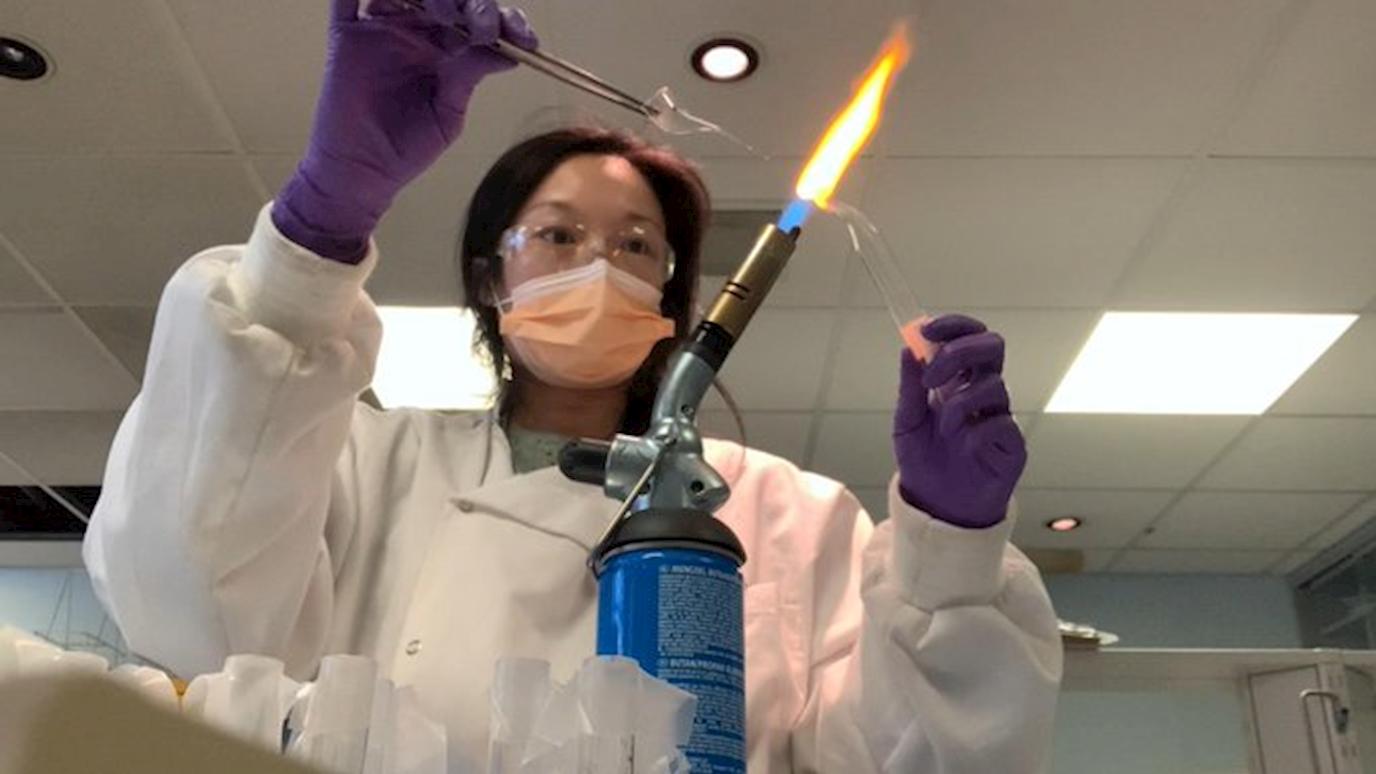A study has discovered that a meteorite which crashed onto a driveway in Winchcombe, Gloucestershire in 2021 contained extra-terrestrial water and organic compounds revealing new insights into the origins of the Earth’s oceans.

The study, led by experts from Royal Holloway, University of London, the Natural History Museum, and the University of Glasgow, reports the orbital history and first laboratory analyses of the meteorite, which was recovered only hours after its spectacular fireball lit up the skies over the UK in February 2021.
Dr Queenie Chan, from the Department of Earth Sciences led the analysis of amino acids found in the meteorite to help determine its origins.
The Winchcombe meteorite is a rare carbonaceous chondrite containing approximately 2% carbon (by weight) and is the first ever meteorite of this type to be found in the UK.
Through detailed imaging and chemical analyses, the research determined that this meteorite contains approximately 11% extra-terrestrial water (by weight), most of which is locked-up in minerals that formed during chemical reactions between fluids and rocks on its parent asteroid in the earliest stages of the solar system.
The study measured the ratio of atoms in the water, finding it closely resembled the composition of water on Earth.
Dr Queenie Chan said: “The Winchcombe meteorite provides a unique opportunity for planetary scientists to use and share our expertise. We worked eagerly towards the same goal – to extract as much information as we could, especially as the Winchcombe meteorite was collected fresh.
“I led the Winchcombe meteorite organic team in unravelling the organic constituent of this carbonaceous meteorite–our efforts made this one of the most promptly and extensively analysed carbonaceous chondrites ‘fall’ collected on Earth.
“Analysing the Winchcombe meteorite for its organic composition was one of the most exciting projects by studying extra-terrestrial materials that I have led. It was such an honour to be working on the first successful carbonaceous meteorite recovery in the UK with highly skilled and enthusiastic scientists. We have learned a lot from the Winchcombe meteorite and from each other.”
Samples of the Winchcombe meteorite are currently on public display at the Natural History Museum, the Winchcombe Museum, Winchcombe and The Wilson (Art Gallery), Cheltenham. The curation and first analyses of the Winchcombe meteorite were supported by the Science and Technology Facilities Council (STFC).
























